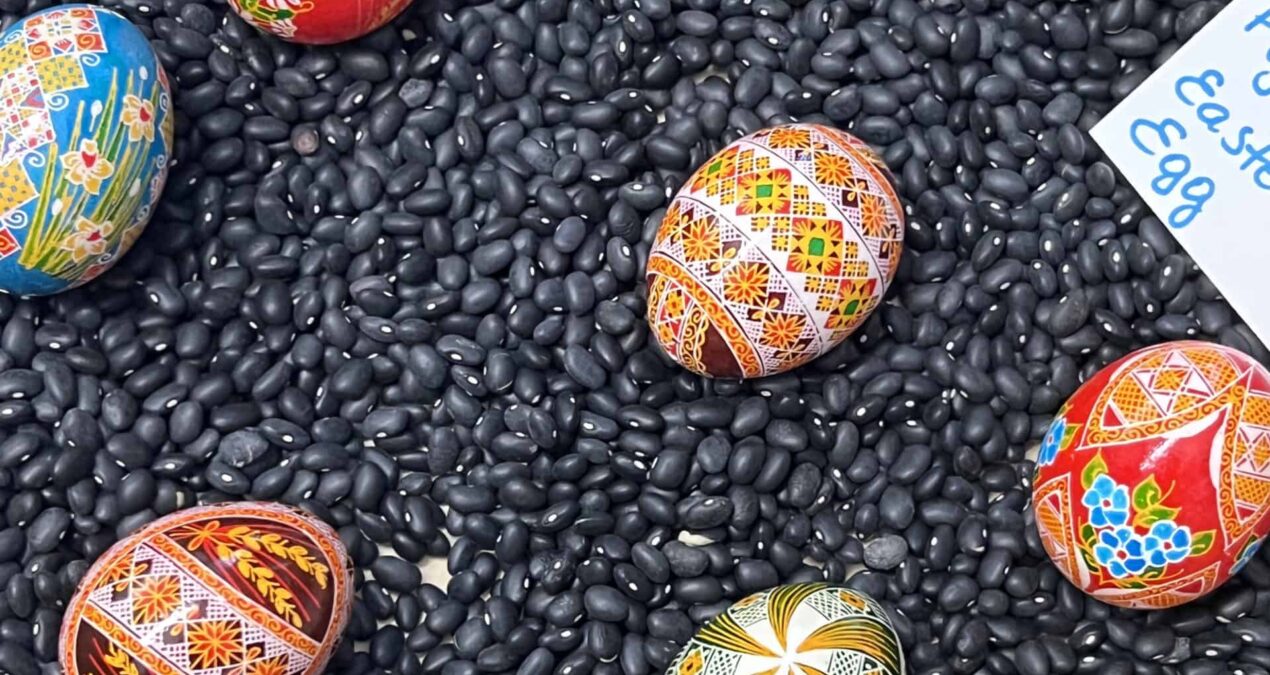Julia Barker, Special to The Denisonian–
The Ukrainian practice of pysanka making is a tradition that dates back to the bronze age, used throughout decades as an object of worship and celebration. Ukrainian pysanka making is the traditional practice of egg decorating that uses wax resistance to create intricate patterns and designs, each having a different meaning and set of symbols. Martha Mudri, a member of the Ukrainian Cultural Association of Ohio (UCAO), visited Denison to talk about the history of pysanka making, as well as to demonstrate how a traditional pysanka is made.
The word pysanka comes from word ‘pysaty’, which means to write. In ancient times, Mudri states, “people made replicas of eggs out of clay, glass, and ceramics, and decorated them as if they were eggs, and that is something that archaeologists have been able to find and date.” The practice of pysanka-making dates back to pre-Christianity.
Mudri says, “In 988, at the turn of the second century, Ukraine became a Christian nation, so prior to that, anyone in that area was Pagan.” During this time of religious divide, there were efforts made to stamp out this practice within Ukraine, but that only worked to an extent. People of non-nobility continued making pysankas, upholding the spiritual and Pagan practices associated with this tradition.
Mudri says that “instead of this tradition being stopped, it was instead co-opted into the Christian motifs of Easter.” Christian tradition has adopted the traditional practice of pysanka making, evolving and Americanizing the practice of egg dying into what is more commonly known today as Easter eggs.
The symbolism seen within traditional pysanka making can vary based on location within each region of Ukraine. Each region has different traditional pattern forms, design choices, and colors that vary depending on the history of that region and the important iconography present there. Common designs used within pysanka making include symbols of the sun, animal motifs, line designs, plants, flowers, and man-made agricultural symbols. Each symbol represents different beliefs within Pagan tradition and Ukrainian folklore, and these symbols often hold power within the Pagan community.
Murdri continued, stating, “The Pagans in the area of the world that became Ukraine held the egg in high esteem. It was a dual symbol of both life and birth.” Pagans of this time connected the power of the egg to their worship of the sun, believing that both were sources of life. Murdi said both were, “Life-giving, and life’s sustaining” within Pagan tradition.
Through the history of Pagan rituals and pysanka making, the pysanka became a tool of worship for Ukrainian Pagans of the time. Murdi states that pysankas became, “a talisman that can ward off bad luck, or bring good luck.”
Within Pagan tradition, the egg is known to hold the same power as the sun based on the season, having the most in springtime as the sun began to reemerge from the winter. Through this historical development and changes within religious affiliation, pysankas became a token within Ukrainian history and culture, and the symbols present within the different designs show different aspects of Ukrainian traditions.
The practice of pysanka making is a tradition that dates back to before written history. The importance of pysankas within Ukrainian culture is passed down generationally through families and communities through Ukrainian folklore, history, and culture. Through the antiquity of Pagan religious practice and pysanka making, the pysanka became a symbol of worship for the Ukrainian people. Pysanka making today still holds an incredibly significant role in Ukrainian culture and is a symbol of Ukrainian history and cultural development.

